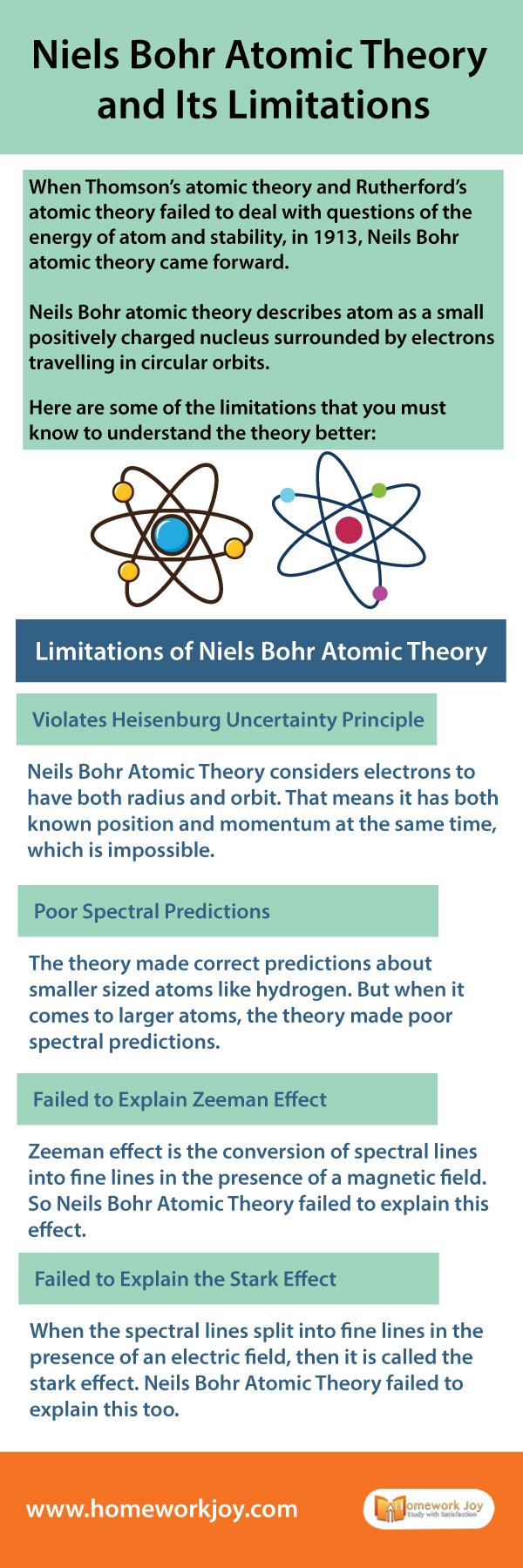When Thomson’s atomic theory and Rutherford’s atomic theory failed to deal with questions of the energy of atom and stability, in 1913, Neils Bohr atomic theory came forward. It is the very first model that correctly explained the radiation spectra of the hydrogen atom. Thus it has its own importance in science. So today, we’ll discuss its postulates and limitation in brief.
Also, read some of our latest posts:
Neils Bohr atomic theory describes an atom as a small, positively charged nucleus surrounded by electrons traveling in circular orbits. He also finds out electrons far away from the nucleus have more energy than others, and electrons near the nucleus have less energy. Based on these findings, he stated some postulates. Here are some postulates of Niels Bohr Atomic Theory:
Postulates
- Electrons revolve in a fixed circular path known as “orbits,” “shells,” or “energy level.”
- These shells are stationary. That is why these are known as stationary orbits.
- Every circular orbit has a fixed amount of energy. The electrons don’t radiate energy as long as they continue to revolve around the nucleus in fixed shells.
- The different levels of energy shells are denoted by n=1, n=2, and so on, known as quantum numbers. The range of these quantum numbers varies from lowest to highest energy levels.
- Electrons are also represented as K, L, M, N, and so on, where the lowest energy level is the ground state.
- When an electron jumps from one shell to another, the energy level also changes.
Now let’s see the limitations of this theory. Here are some of the limitations that you must know to understand the theory better:
Limitations of Niels Bohr Atomic Theory
Violates Heisenburg Uncertainty Principle
Neils Bohr Atomic Theory considers electrons to have both radius and orbit. That means it has both known position and momentum at the same time, which is impossible.
Poor Spectral Predictions
The theory made correct predictions about smaller sized atoms like hydrogen. But when it comes to larger atoms, the theory made poor spectral predictions.
Failed to Explain Zeeman Effect
Zeeman effect is the conversion of spectral lines into fine lines in the presence of a magnetic field. So Neils Bohr Atomic Theory failed to explain this effect.
Failed to Explain the Stark Effect
When the spectral lines split into fine lines in the presence of an electric field, then it is called the stark effect. Neils Bohr Atomic Theory failed to explain this too.
So these were some highlights of Niels Bohr Atomic Theory. If you need to know more, get instant science assignment help from our experts anytime.
